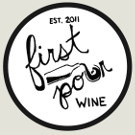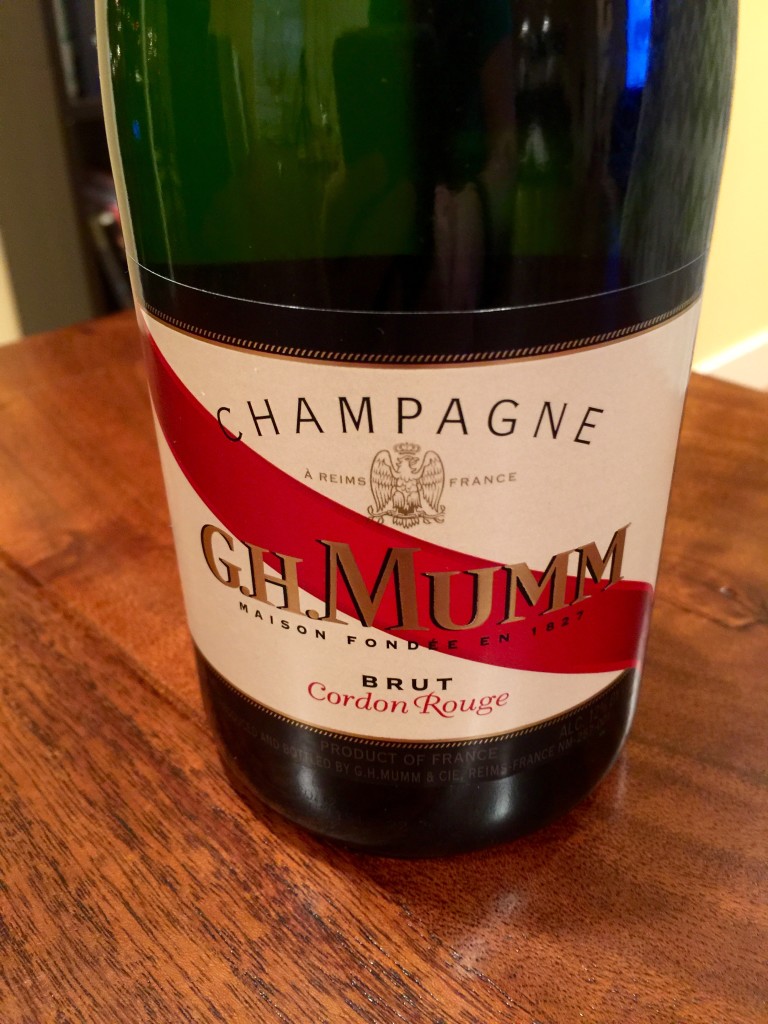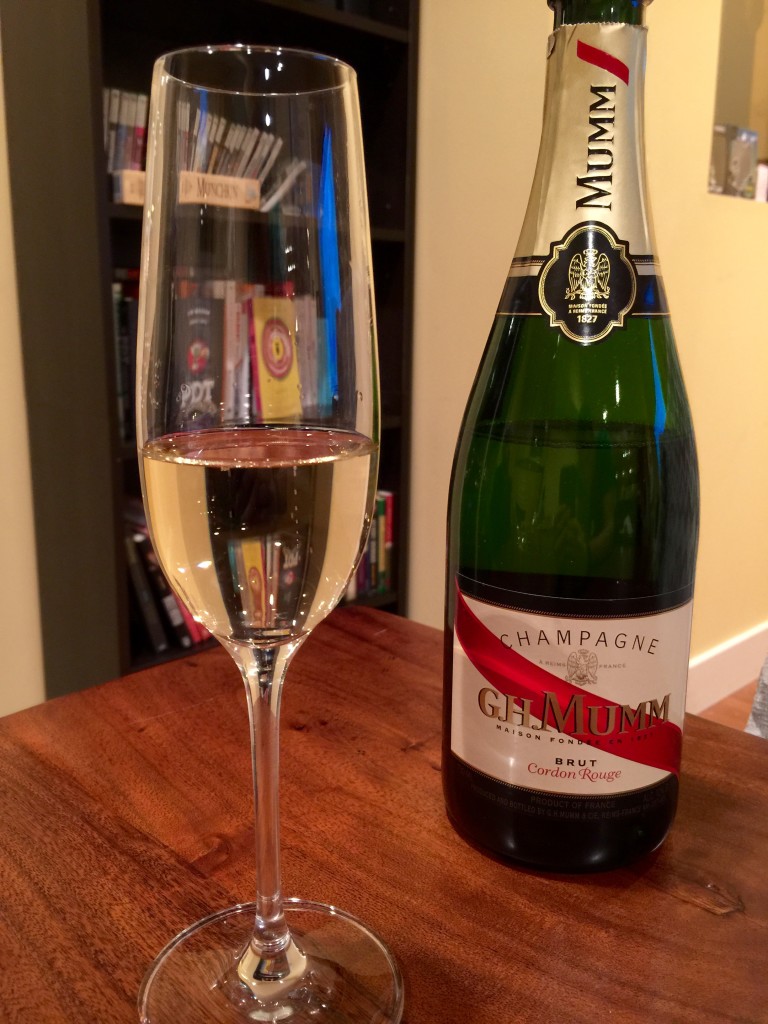To get our New Year’s sparkling wine search off right, it’s only right to start with the grandpappy of them all, Champagne. While Dom Perignon is probably too pricy to serve at just any get together, G.H. Mumm Brut Cordon Rouge is from one of the most historic names in Champagne, and reasonably priced! No matter who makes it though, Champagne is complex, so lets try to let some of the air out of the mystery.
The Region
Champagne, by law, can only be made in Champagne. Located 90 miles northeast of Paris, Champagne is relatively cool, having an average temperature of only 50ºF. This is about the edge of where these vines are even able to operate, much less flourish. To make matters worse, the weather isn’t always cooperative, and rains can spoil a crop at the end of the summer. As if matters weren’t difficult enough, their unfortunate proximity to Germany has also meant the area has seen a few wars.
Ignoring the history it has endure, Champagne is much less complicated than say Burgundy, and is all contained in 1 AOC (think of a governed area that has very specific rules to try to help ensure quality). This helps to make Champagne less complicated, but despite this, it still has hundreds of thousands of vineyard plots. The villages these fall into are ranked by order of quality, with 17 being Grand Crus, 42 being Premier Crus, and some 250+ being Crus
The Grapes
To understand champagne, you must under that the region is perhaps one of the most self regulated in the world. To start with, only 3 grapes are allowed in Champagne, and each adds something unique:
- Chardonnay – Adds finesse, terroir, and laciness. It also is thought to be the primary driver in chalk or minerality in the sense of place Champagne has.
- Pinot Meunier – A clone of Pinot Noir, adds weigh to the body and fruitiness, the least capable of aging.
- Pinot Noir – Rich and complex, adds structure
Making Champagne
To make Champagne is something of a complicated process:
First – The grapes are hand harvested, and frequently, crushed right in the field. The lots are kept separate.
Second – The lots are fermented, almost exclusively in Stainless Steel (with a few exceptions that use very old and well used oak barrels).
Third – All of these individually fermented wines are still, and now ready to be blended. In addition to the base wines that are now available, even more reserve wines, which have been held back from previous years, are available, and must be used. (This is to ensure consistency from year to year)
Fourth – A few guys with really good memories, and even better tastebuds, that happen to be Champagne makers, get together and try to piece together a wine in the future, based on what they’re tasting right now, and from what they remember from the last time they did this and made some other wine that took years to see if they were correct about.
In other words, it’s like predicting the taste of the future using young wine and memories of the past.
Fifth (stay with me here, we’re halfway!) – Once they finalize the blend (the assemblage), they add a bit of yeast and a bit of wine mixed with sugar into each bottle of blend. This is then capped, and the yeast do their work!
Sixth – The bottles legally stay in the cellar, a minimum of 15 months. Usually, they age longer than that, causing the yeast to breakdown, and to add that creaminess that so vividly contrasts with the bright acidity.
Seventh – The bottles are riddled – Flipped upside down, and rotated many times (20+). The bottle is placed neck down in a rack, and the yeast collects in the neck.
Eighth – The yeast collected in the necks is frozen with glycol, the yeast plug is removed, and the wine is topped up with a mixture of reserve wine and sugar. (How dry the champagne is can be figured by the label, see our sweetness of sparkling wine for help). The champagne is corked, and (theoretically) ready to drink.
At this point oxygen has been introduced, and the wine starts aging oxidatively (compared to reductively, before the yeast were removed). This entire process is called disgorging, and some premium champagnes will carry the date of disgorgement, so you can know how long since oxygen was introduced to the bottle.
G.H. Mumm Brut Cordon Rouge
Now that you know how it’s made, how does the Mumm Champagne House’s G.H. Mumm Brut Cordon Rouge taste?
Sight: Moderate gold, with light small bubbles
Smell: The nose is tighter than it seems, but has a massive amount of yeasty character. The bready notes are complimented by fresh green apples and hints of citrus. As the nose opens, there is a massive increase in nuttiness, pulling in hazelnut praline, almonds, toast, and smooth vanilla.
Sip: The green apple peaks out, before things get incredibly nutty. Rich, hazelnut praline jumps out, before getting backing from vanilla laced almonds, orange zest, and baked apples tart. The body is light to medium despite the richness of the nutty flavors, and remains incredibly lively throughout. Hints of sweetness from the vanilla twinkle through.
Savor: The ending carries on the yeasty, bready, nutty flavors, with some of the notes from citrus. The finish is shorter than it would seem despite the powerful nuttiness.
G.H. Mumm Brut Cordon Rogue is delicately balanced, but muscular. The nuttiness is strong, but is elegantly wrapped around the elements of apple and the bubbles. The depth of flavors is complex, and grows as the wine opens up. The vanilla elements are fun touch as well, adding a peak of sweetness to the touch of your tongue. Overall, G.H. Mumm Brut Cordon Rouge isn’t a fruit forward sparkler, but it isn’t meant to be. As an introduction to champange, it’s beautiful, and worthy of your celebrations for a reasonable price.
Verdict: Hazelnut Praline, Laced Vanilla, Toast, Orange Zest, Balance
Price: $35
Champagne, France
Available at Wine.Com


